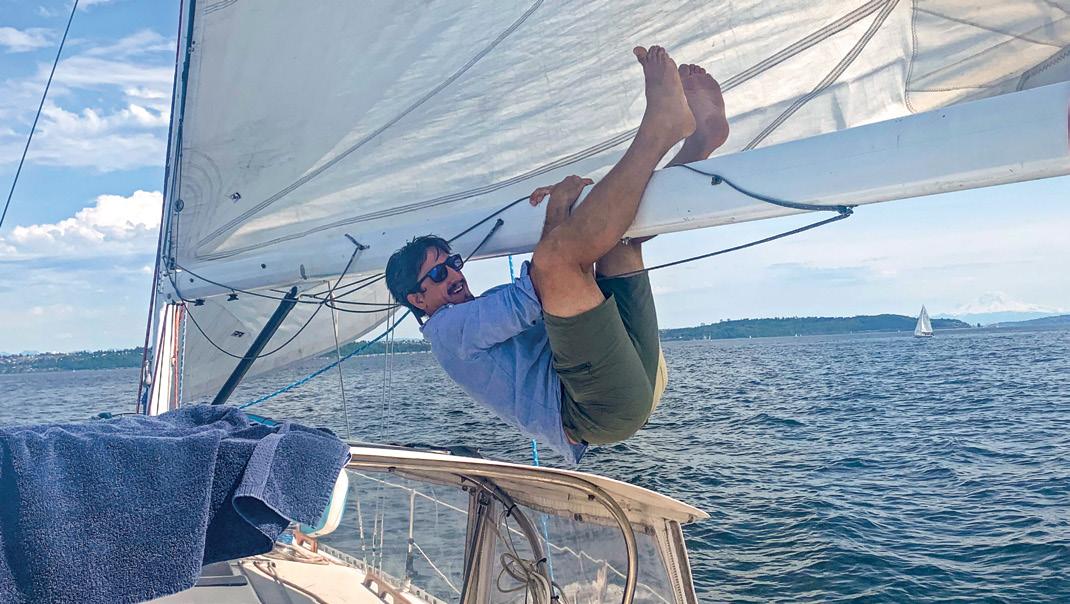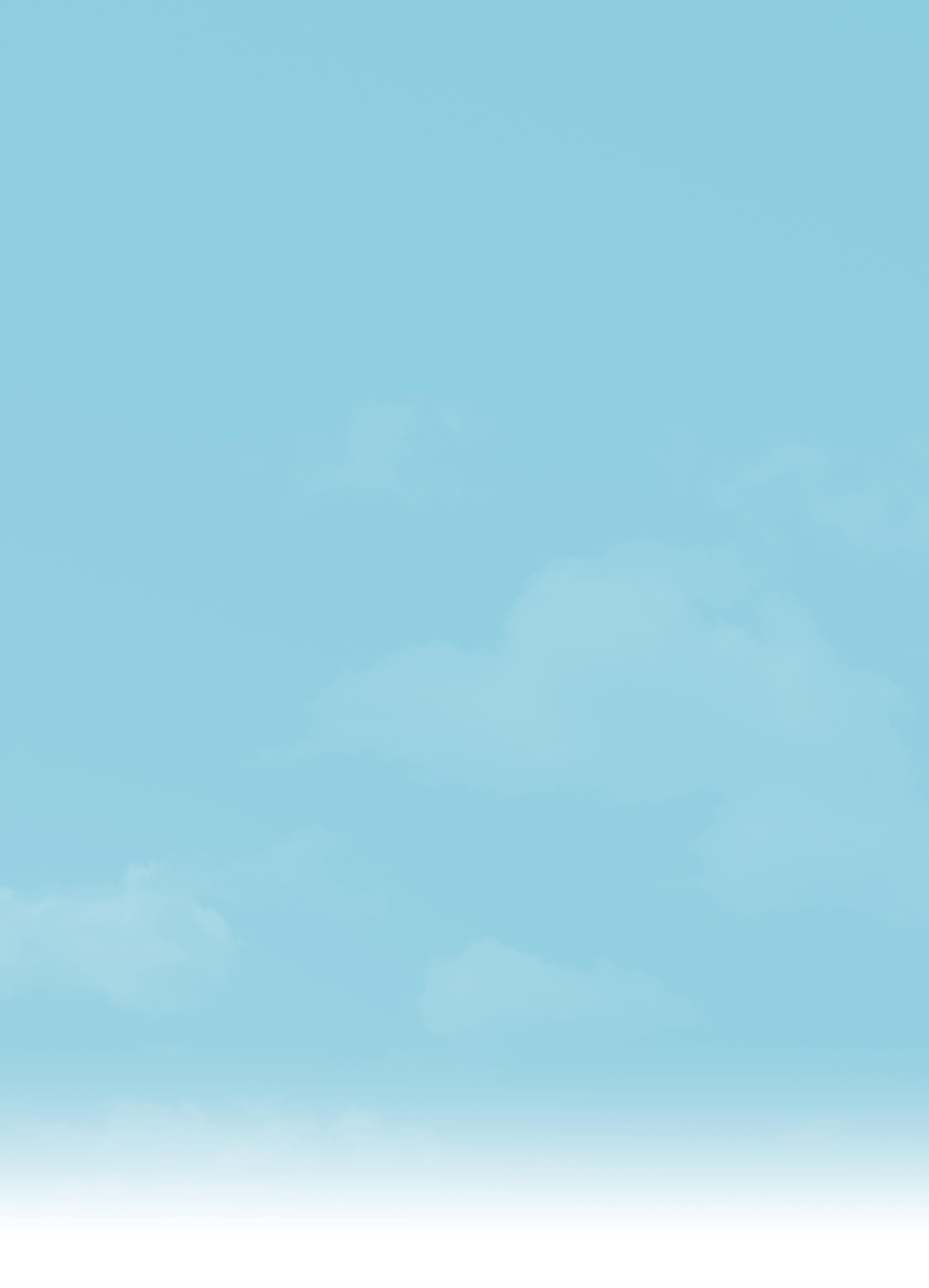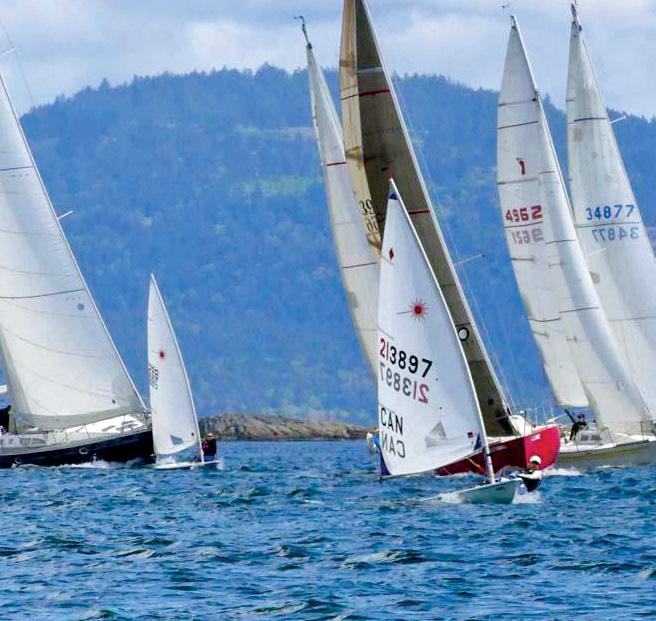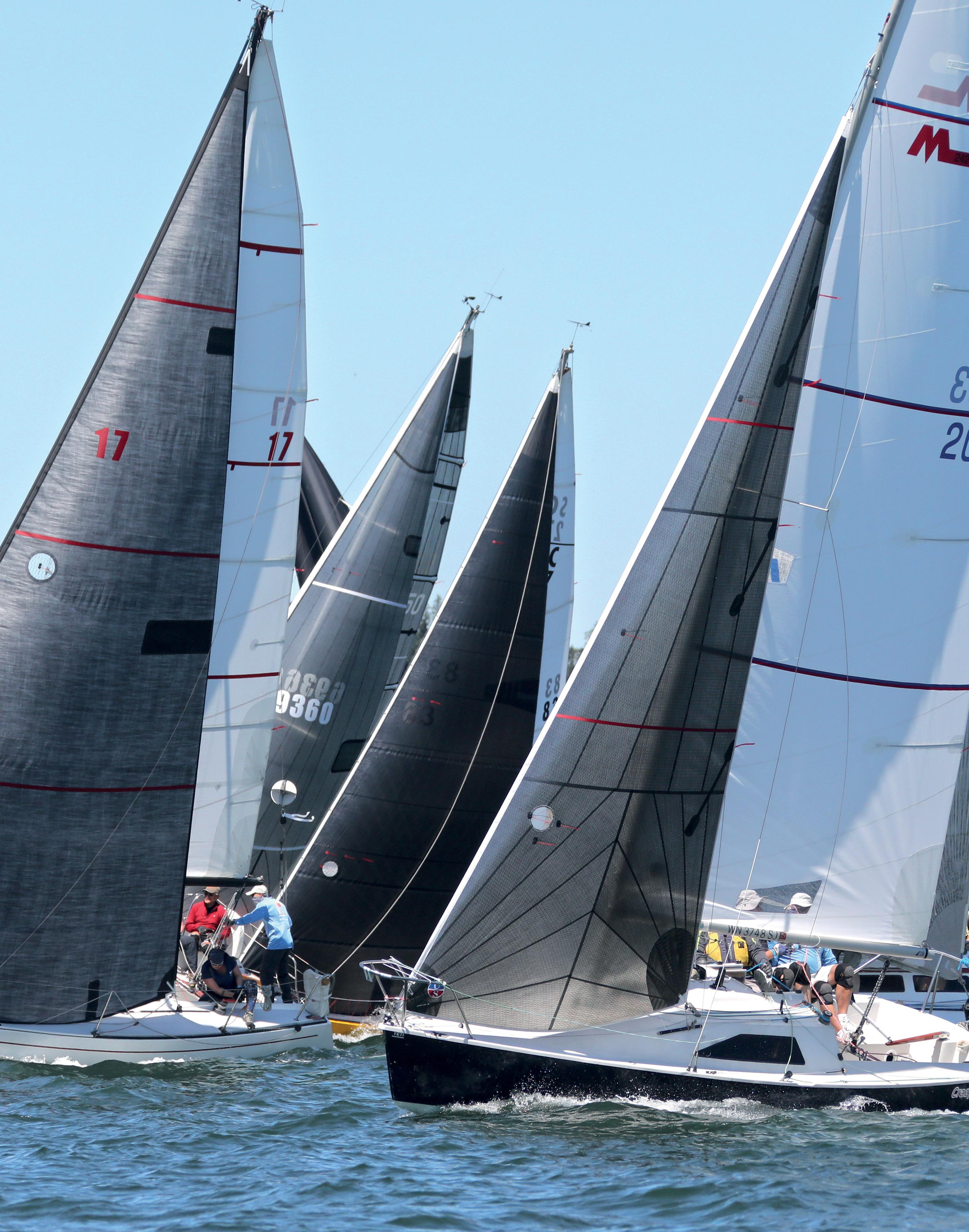
8 minute read
Restarting Boating Season
from June 2020 48° North
by 48° North
SIMPLE Pleasures
REOPENING RECREATIONAL BOATING IN THE PNW
Iwould venture that many boats around the Pacific Northwest went longer without a visit from their owners during the past few months than during even the gloomiest stretches of a typical winter. Following the partial reopening of dayuse recreational boating by Washington Governor, Jay Inslee, on May 5, 2020—and a similar announcement from Oregon Governor, Kate Brown—many in our community are joyfully casting off for revitalizing local adventures afloat. The stories and activities are humble by normal boaty standards, but the happiness, relief, and freedom of returning to the water have been extraordinary.
Boaters in our region, myself included, are relieved to have been given clarity as to what exactly is approved. Up to this point, it’s fair to say that there was some variance of interpretation about whether recreational boating was officially banned when closures of boat ramps, recreational fishing, and transient moorage facilities all over the state of Washington were paired with Governor Inslee’s “Stay Home, Stay Healthy” order.
Many boaters chose to stay ashore because of these orders. Were there still boaters on the water? Yes. Were most of them socially distant, day sailing locally on their own boats, and generally conducting themselves with abundant caution and responsibility? Yes. Was there understandable concern and contention from some boaters and other stakeholders about whether they should have been out there? Yes, to say the least. Are we glad to put that ambiguity behind us? I know I am.
It’s not as if the designated reopening is carte blanche—clear parameters are given to boaters to stay as local as possible, to boat with their immediate households only, to practice social distancing at boat ramps and marinas, to minimize touch points in general, and to respect jurisdictions that haven’t reopened yet (like San Juan County). However, even without customary levels of access, the reopening gives a framework to waterborne enthusiasts, and allows all of us to feel good about celebrating responsible activity on the water once more.
Clear approval of local, day-use boating activity in this pandemic era would have been enough to send most in the boating community beelining for their vessels. That the first weekend of the reopening afforded boaters 80-degree temperatures and summery sunshine… well, that was almost too much to bear.

My pal, Scott Galbraith, keeps his Kendall 32, Shaula, in Brinnon, WA. During the first weekend after reopening, he reports that he enjoyed “a daysail on Sunday when it was in the 80s! To say it felt great to be on the water would be an understatement.” While conditions were lovely, he says that it was “pretty chill in Hood Canal. The parks were nuts, but it was quiet on the water, other than a few jet skis.”
While things were blissfully tropical and quiet in the Canal, in certain parts of the region, sailors, SUPers, powerboaters, fisherfolk, rowers, and everything in between—all took to the water in shorthanded droves. Instructions from government officials stipulated that travel far from home was discouraged and overnight stays at docks or mooring buoys wasn’t allowed. The majority of folks on the water abided by these guidelines. There were a few taking further liberties, but at least in the venue of the Washington Marine State Parks, they were met with directives to vacate and, in some cases, fines.
Steve Ramsey’s observation of signage at Sucia with conflicting messages about overnight buoy use.

48° North reader, Steve Ramsey, was among the daytime visitors to Sucia Island State Park. He told us in regard to the sunny first weekend after reopening that “EVERY mooring ball, dock, and linear tie was full last weekend at Sucia.” He indicated that some signage could have been confusing to visiting boaters, even though the state-wide restrictions were widely reported. On that first open weekend of May 9 and 10, there were signs referencing overnight use of mooring buoys as permitted. On Monday, May 11, bolder signs were posted clarifying that no overnight use was permitted, even on buoys.
But for the most part, boaters understood what was allowed and acted accordingly. And it was simply glorious. The joys of a day on local waters felt as novel and revitalizing as a grand adventure. It’s all a matter of context, isn’t it?
For liveaboards, Genevieve Livingston and Jarod Fisher, small-bite sailing on their J/40 has been even more essential since they aren’t able to be out racing the way they normally would be. Gennie told me, “Sailing has helped us stay sane and get some fresh air. It keeps our spirit high! Knowing sailing is approved is a relief, but we miss racing for sure. Ready for better times ahead!”
One segment of boaters not particularly aided thus far by the reopening are non-boat-owners. While sailing clubs are planning their cautious reopenings, folks who tend to crew for others have a more obscured path to local waters. Yet, instances

- Stephanie Campbell
of borrowed boats are popping up. In Port Townsend, liveaboard Josh Wheeler could sail the 20-foot Flicka he calls home, sure. But he’s been offered a someday-soon position as a skipper on a local Thunderbird belonging to an owner with multiple boats. So, Josh’s day sailing since the reopening has actually been aboard a borrowed boat. On behalf of the boatless crew of the region, I hope other boat owners may feel similarly generous in granting occasional solo use of their boats for close friends without a boat of our own.
On Sunday, May 10, Josh wrote: “Today was my second solo, singlehanded, social distancing, sail . . . on a Thunderbird sailboat named Kolus. Say that three times fast. I am starting to get the hang of it. The wind was fantastic, and we were going over 6 knots upwind . . . I am learning more about trimming these sails and the backstay adjustment. Compared to a Flicka, it is obviously faster and lighter, but with that fin keel, you can’t leave the helm for a second without the boat immediately veering off in one direction or another. So it is way more challenging and way more work by yourself.” 48° North’s regular racing columnist, Stephanie Campbell, is deeply grateful for the opportunity to be sailing. “Being on the water is just something special. It makes life normal again, for the time being. Something about sailing just soothes my soul. I go out a couple times a week, just in the Fidalgo Bay area.” Sharing the view from her neighborhood, she says, “In Anacortes, not much changed on May 5. The same few boats are out, with a few more boats fishing. The lakes have some boats now, but it’s still pretty quiet.”
It’s not as if there aren’t some evident compromises. Stephanie says emphatically, “I miss my sailing friends!” She acknowledges that it has been, and will continue to be, tough to navigate these uncharted waters. “We’re all muddling through this. We have to work together.”
Steph also highlights an important aspect of this cautious reopening, elaborating, “We need to be self-sufficient and stay in our bubble on the water. Not everyone is ready to sail singlehanded. You might need a family member to help. When I kept my boat in dry storage, one son helped launch and the other helped haul out. I know that I’m happiest when I get some time on the water, even if it’s by myself.”
As a boating community, the official reopening means more of us are able to participate in the activities we love. And, as long as we retain the priorities of boating respectfully and responsibly, we can all stay hopeful for progress ever-closer to normal. Or whatever the new normal ends up being.
PROTECT WHAT YOU LOVE: Green Boating in the San Juan Islands
Help recover salmon and orca by avoiding sensitive eelgrass and herring spawning habitats when boating in the San Juan Islands. San Juan Island Orcas Island Lopez Island Shaw Island ANCHOR OUT OF EELGRASS The San Juan Islands are an internationally acclaimed boating destination and each summer our waters fill with local and visiting boaters. Stunning landscapes and a rich marine environment provide extensive recreational opportunities such as wildlife viewing, fishing, and crabbing. This amazing group of islands in the Salish Sea, where boaters find wonder and joy, are also critical habitats where fish and wildlife find food and shelter. Sensitive eelgrass habitats are nurseries for juvenile Chinook salmon as well as spawning areas for Pacific herring - small schooling fish that support seabirds, big fish, and marine mammals. Eelgrass damaged by boat anchors can take years to recover. To help salmon and the endangered Southern Resident orcas, avoid herring spawning grounds, anchor out in waters deeper than the eelgrass, or use a mooring buoy when staying outside a marina. Protect marine mammals by keeping your distance, reducing speeds, and turning off fish finders and echo sounders when not in use. Keep marine waters clean by using pump outs, keeping your boat in good working order, and quickly cleaning even small spills. Help recover salmon and orca by avoiding sensitive eelgrass and herring spawning habitats when boating in the San Juan Islands. San Juan Island Orcas Island Lopez Island Shaw Island ANCHOR OUT OF EELGRASS


Use the detailed and site specific information provided by Friends of the San Juans in their boater guide found at SanJuans. org/greenboating to plan ahead and ensure your boating experience in the San Juan Islands is safe and enjoyable for people and nature!
Herring Spawning Habitat
Anchor out of eelgrass or use mooring buoys to protect herring spawning grounds.
Shallow Eelgrass Habitat
Anchor deeper than 15 feet (at low tide) to avoid eelgrass in these areas.
Eelgrass Habitat
Anchor deeper than 25 feet (at low tide) to avoid eelgrass in these areas.
Herring Spawning Habitat
Anchor out of eelgrass or use mooring buoys to protect herring spawning grounds.
Shallow Eelgrass Habitat
Anchor deeper than 15 feet (at low tide) to avoid eelgrass in these areas.
Eelgrass Habitat
Anchor deeper than 25 feet (at low tide) to avoid eelgrass in these areas.










